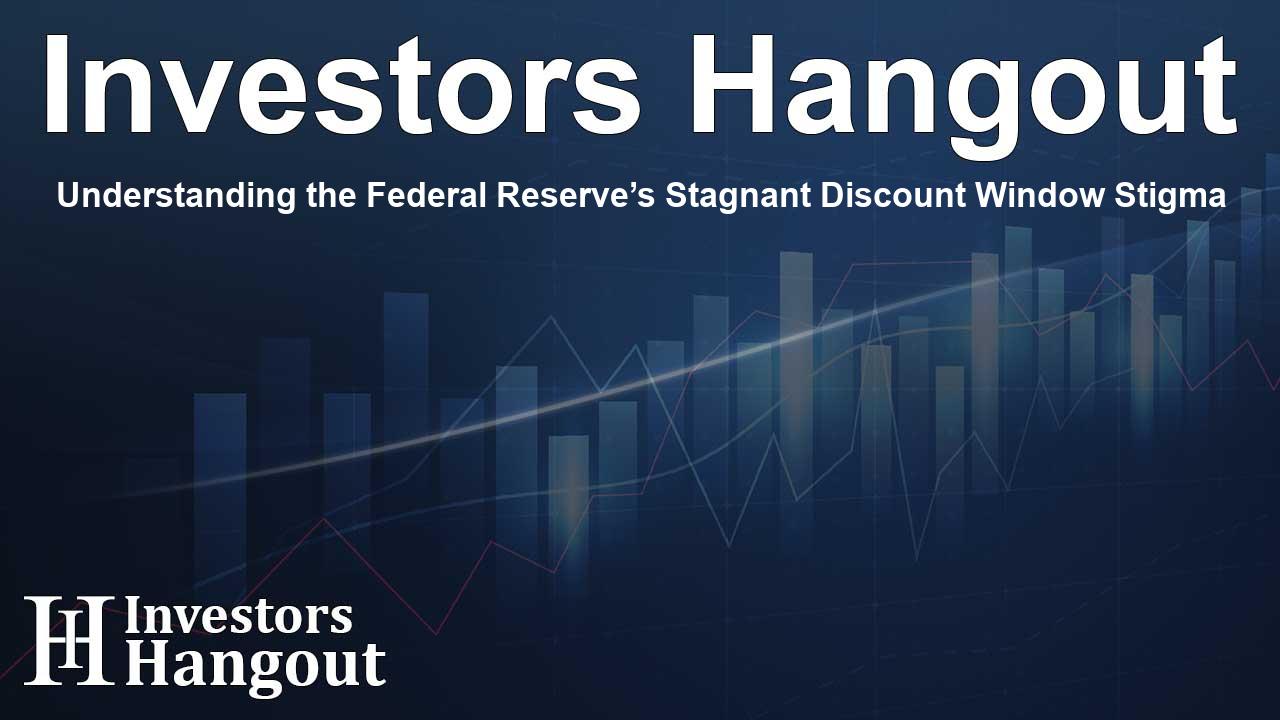Understanding the Federal Reserve’s Stagnant Discount Window Stigma

Current Analysis of Discount Window Stigma
The Federal Reserve Bank of New York has recently conducted a thorough analysis of the stigma associated with the Discount Window (DW) from 2014 to 2024. This insightful report reveals that, despite various policy modifications designed to encourage the use of the DW, a notable stigma remains, particularly impacting smaller banks and during times of financial distress. The findings are particularly striking because they show that the reluctance to utilize the DW, which is meant to serve as a lender of last resort, remained prevalent even in the months leading up to the recent banking turmoil and persists a year after.
Understanding the Role of the Discount Window
The Discount Window plays a vital role in providing backup funding to sound depository institutions secured against various types of collateral. In an effort to stimulate borrowing and reduce stigma, the Federal Reserve has amended its policies over the years. For example, in response to the onset of the COVID-19 pandemic in 2020, the Fed reduced the primary credit rate to 0.25% and extended loan terms to a generous 90 days, among other strategies. Despite these proactive measures, the explicit stigma associated with the DW has not been entirely eradicated.
The Impact of Stigma on Smaller Institutions
According to the report, small domestic banks with assets under $50 billion incurred an additional $0.5 billion in excess interest when borrowing federal funds at rates higher than the Discount Window rate after the collapse of First Republic Bank (OTC:FRCB) on May 31, 2023. This occurred even as liquidity in financial markets seemed to normalize, underscoring that stigma has led to more costly borrowing, which is an ongoing challenge for these smaller banks.
Persistence of Stigma and Its Financial Implications
One of the more alarming insights from the analysis indicates that if a bank experiences stigma once, it is about 40% more likely to encounter it again in the following month. Conversely, institutions that utilize the DW are less susceptible to future stigma. The study suggests that financial challenges also increase a bank's vulnerability to stigma, which can serve as a more telling indicator of potential failure than actual borrowing from the DW itself.
Trends in Discount Window Borrowing
Observations of DW borrowing patterns post-2014 reveal that usage remained minimal prior to the COVID-19 pandemic. However, during this crisis, borrowing surged sharply, reaching an unprecedented peak of $49.8 billion in outstanding loans. The turmoil in March 2023 brought even greater reliance on the DW, with outstanding loans soaring to $155 billion, a figure significantly higher than those recorded during both the global financial crisis and the early pandemic phase.
Broader Observations on Market Stigma
The stigma surrounding the Discount Window was not confined solely to the federal funds market. The report notes that such stigma was observable during the last three major financial disruptions, including the September 2019 repo market disruption, the onset of the COVID-19 pandemic, and the turmoil in March 2023.
Future Considerations for the Federal Reserve
Findings from the New York Fed highlight the intricate nature of addressing stigma surrounding the DW and raise pertinent questions regarding the effectiveness of current strategies. The ongoing stigma among smaller banking institutions poses a significant challenge to the Federal Reserve's aim to promote regular access under both favorable and adverse conditions. In conclusion, the report emphasizes the need for further research to unravel the complexities behind the persistence of stigma and outlines key considerations for reforming the DW system to foster its utilization without the accompanying stigma.
Frequently Asked Questions
What is the Discount Window?
The Discount Window is a facility through which the Federal Reserve provides backup funding to sound depository institutions, typically secured by various types of collateral.
Why does stigma exist around the Discount Window?
Stigma exists because the Discount Window is perceived as a last resort option, primarily associated with financial distress, leading banks to borrow from other sources even at higher costs.
How has the pandemic affected Discount Window borrowing?
The COVID-19 pandemic prompted a significant increase in borrowing, with outstanding loans reaching a peak of $49.8 billion during this time, highlighting heightened reliance on the facility.
What impact does stigma have on smaller banks?
Smaller banks are disproportionately affected by stigma, often facing higher borrowing costs and increased financial risk when they avoid utilizing the Discount Window.
What are some recommendations for addressing DW stigma?
Further research and understanding are necessary to identify effective reforms aimed at encouraging usage while alleviating the associated stigma.
About The Author
Contact Henry Turner privately here. Or send an email with ATTN: Henry Turner as the subject to contact@investorshangout.com.
About Investors Hangout
Investors Hangout is a leading online stock forum for financial discussion and learning, offering a wide range of free tools and resources. It draws in traders of all levels, who exchange market knowledge, investigate trading tactics, and keep an eye on industry developments in real time. Featuring financial articles, stock message boards, quotes, charts, company profiles, and live news updates. Through cooperative learning and a wealth of informational resources, it helps users from novices creating their first portfolios to experts honing their techniques. Join Investors Hangout today: https://investorshangout.com/
The content of this article is based on factual, publicly available information and does not represent legal, financial, or investment advice. Investors Hangout does not offer financial advice, and the author is not a licensed financial advisor. Consult a qualified advisor before making any financial or investment decisions based on this article. This article should not be considered advice to purchase, sell, or hold any securities or other investments. If any of the material provided here is inaccurate, please contact us for corrections.
